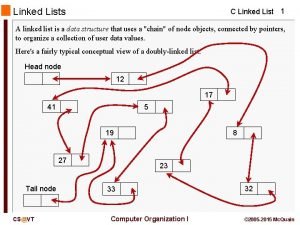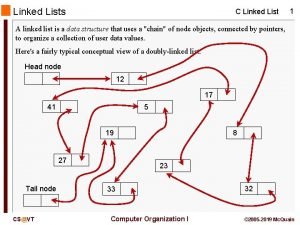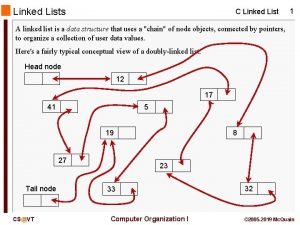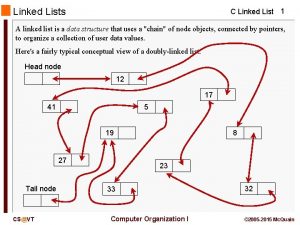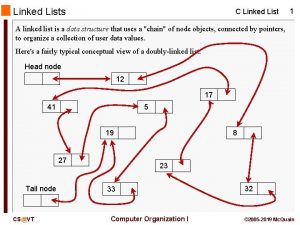FINANCIAL MANAGEMENT FINANCE Finance is linked with the





























- Slides: 29

FINANCIAL MANAGEMENT

FINANCE Finance is linked with the flow of money, the availability of funds at a time, advance knowledge of, or information about financial commitments etc. The focus of finance is on the flow of funds which is justifiable, because the financial manager must take financial decisions based on flow of funds.

Financial Management Financial management is an applied branch of management that looks after the finance function of a business. “Financial management is the operational activity of the business that is responsible for obtaining and effectively utilizing the funds necessary for efficient operations”.

Financial Management �Financial management deals with how the corporation obtains the funds and how it uses them”-- Hoagland

Evolution � Financial management emerged as a distinct field of study at the turn of 20 th century. Its evolution can be divided into three broad phases: Modern Traditional Transitional

Traditional Approach • Procurement of funds needed by business • Utilization of funds beyond its purview Modern approach • Includes both raising of funds as well as effective utilization. • Finance function does not stop only by raising funds.

Scope of financial management ØEstimating Financial Requirements ØDeciding capital Structure ØSelecting a Source of Finance ØSelecting a pattern of Investment ØCash Management ØImplementing Financial Controls ØProper use of Surpluses

Functions of financial management Investment Decision Liquidity Decision Dividend Decision Financing Decision

Business Activities Raising funds • Financing decision Investing in assets • Investment decision Distributing returns • Dividend decision Balancing flows • Liquidity Function

Finance Function There exists an inseparable relationship between finance on one hand other functional areas on the other. All business activities, directly or indirectly, involve the acquisition and use of funds. This finance function though has a significant effect on other functions yet it need not necessarily limit or constraint the normal functioning of the enterprise. The functions of raising funds, investing them in assets, distributing returns earned from assets to stakeholders and attempting to balance cash flows are respectively called: 1) Financing decision 2) Investment decision 3) Dividend decision 4) Liquidity decision

Financing Decisions This decision is concerned with, where from and how to acquire funds. The central issue is the determination of appropriate proportion of debt and equity. An attempt has to be made to have optimal capital structure which means maximizing the value of shares. The use of debt may increase the return and risk for shareholders and hence, a proper balance has to be struck between return and risk.

Investment Decisions A firm’s investment decision involves capital expenditure, which is generally referred to as capital budgeting. There are two important aspects of investment decisions: a) The evaluation of the prospective profitability of new investments; b) The measurement of a cut-off rate against which the prospective return of the new investments could be compared. Risk in investment arises because of uncertain returns. Investment proposals should be evaluated in terms of expected return and risk. There is a broad agreement that the correct cut-off rate is the opportunity cost of capital.

Dividend Decision A finance manager is confronted with a problem that whether a firm should distribute whole of the profits earned or retain them or distribute a part and retain the balance. Called, dividend policy, it should be designed in terms of its impact on the shareholders wealth. A desirable dividend policy is one which maximizes the market value of the firm’s shares. As far as possible a firm should try to have a stable dividend policy. Dividend is generally paid in cash or in form of Bonus shares.

Liquidity Decision Investment in current assets affects the firm’s profitability and liquidity. Current assets should be managed efficiently for safeguarding the firm against ill-effects of illiquidity. A conflict generally exists between profitability and liquidity while managing current assets and an all out effort has to be made to have a trade-off between the two. For ensuring such a trade-off the finance manager has to develop sound techniques of managing current assets. In this context precise estimates regarding current assets have to be worked out and it has to be made certain that funds are made available when required.

Objectives of Financial Management Ø Basic Objectives Ø Other Objectives Basic Objectives: 1) Profit Maximisation 2) Wealth Maximisation

Profit Maximization Profit maximization implies that a firm either produces maximum output for a given amount of input, or uses minimum input for producing a given output. Profit earning is the main aim of every business activity. A business being an economic institution must earn profit to cover its costs and provide funds for growth. Profit is the measure of efficiency. Profits provide protection against risks. Accumulated profits help an organization to face market oscillations. Thus profit maximization is considered to be the main objective of a business enterprise. Profit is considered as the most appropriate measure of a firm’s performance.

Points in favour of Profit maximisation. Profit is a barometer through which the performance of a business unit can be measured. Profit ensures maximum welfare of all the stakeholders. Profit maximization increases the confidence of management for modernization, expansion and diversification. Profit maximization attracts the investors to invest. Profits indicate efficient utilization of funds. Profits ensure survival during adverse business conditions.

Points Against Profit Maximisation � It may encourage corrupt and unethical practices. � It ignores time value of money. � It does not take into account the element of risk. � It attracts cut throat competition. � Huge amount of profit may attract Government intervention. � Huge profits may invite problems from workers who may demand increased wages and salaries. � Customers may feel exploited. � Profit maximization may adversely affect the long term liquidity position of the company.

Points Against---�The term profit is vague and it cannot be defined precisely. �The effect of dividend policy on the market price of shares is not considered. �All said and done there is no denying the fact that no organization can ignore the aspect of profit. The point to be taken care of is that it is earned following ethical practices. The interests of all the stakeholders should be kept in mind. The point of view of the society at large should not be ignored.

Wealth Maximisation The goals of the management should be such all the stakeholders are benefited. A financial action that has a positive NPV creates wealth for shareholders and, therefore, is desirable. Between mutually exclusive projects the one with the highest NPV should be adopted. This is referred to as the principle of value additivity. The wealth will be maximized if NPV criteria is followed in making financial decisions. The objective of wealth maximization takes care of the questions of the timing and risk of the expected benefits. It is important to emphasize that benefits are measured in terms of cash flows. In investment and financing decisions, it is the flow of cash that is important, not the accounting profits.

Elements Of Wealth Maximisation �Increase in profits �Reduction in costs �Judicious choice regarding sources of funds �Minimum risk �Long term value

Points in Favour of Wealth Maximisation �As the net present value of cash flows is considered, the net effect of investments and benefits can be measured in quantitative terms. �It considers the concept of time value of money. The present values of cash inflows and outflows helps the management to achieve the overall objective of the company. �It takes care of the interests of all the stakeholders. �It guides the management in formulating a consistent dividend policy.

Points in Favour �It considers the impact of risk factor and while calculating the NPV at a particular discount rate, adjustment is made to cover the risk that is associated with investments. �It implies long run survival and growth of the firm. �It leads to maximizing stockholders’ utility or value maximization of equity shareholders through increase in stock price per share.

Point Against Wealth Maximisation �It may �There not be socially desirable. is some confusion as to whether the objective is to maximize stockholders’ wealth or the wealth of the firm , the latter includes other financial claimholders also such as debenture holders and preference shareholders etc. �Because of divorce between ownership and management, the latter may be more interested in maximizing managerial utility than shareholders wealth.

Risk Return Trade Off Financial decisions incur different degrees of risk. Financial decisions of a firm are guided by the risk return trade-off. These decisions are interrelated and jointly affect the market value of its shares by influencing return and risk of the firm. The relationship between return and risk can be expressed as follows: Return= Risk free Rate+ Risk premium Risk free rate is a rate obtainable from a default-free Government security. Risk free rate is a compensation for time and risk premium for risk. Higher the risk of an action, higher will be the risk premium leading to higher required return on that action. A proper balance between return and risk should be maintained.

Risk--- To maximize the market value of a firm’s shares. Such balance is called risk-return trade-off, and every financial decision involves this trade off. The financial manager , in a bid to maximize shareholders’ wealth, should strive to maximize returns in relation to the given risk; he or she should seek courses of actions that avoid unnecessary risks. To ensure maximum return, funds flowing in and out of the firm should be constantly monitored to ensure that they are safeguarded and properly utilized. The financial reporting system must be designed to provide timely and accurate picture of the firm’s activities.

�All said and done, both the basic objectives of financial management are important, though in the present day set up , wealth maximization has emerged to be the premier. �There is no harm in maximizing the profits, if they are earned in a fair, just, transparent and judicious manner. Profits earned by resorting to unethical, corrupt and undesirable practices are not welcome. Profits earned in a fair manner will certainly lead to the achievement of ultimate object of financial management.

Other Objectives v. Ensuring a fair return to shareholders v. Building up reserves for growth and expansion v. Ensuring maximum operational efficiency by efficient and effective utilization of finances. v. Ensuring financial discipline in the organization v. Maintenance of liquid assets

Objectives Of Financial Management � Hampton has given the following objectives of financial management: Profit Risk Approach to Financial Management: � 1. Maximize profits; � 2. Minimize risk; � 3. Maintain control; � 4. Achieve flexibility. Liquidity-Profitability Approach to Financial Goals: � 1. Maximize liquidity; � 2. Maximize profitability.
 Singly linked list vs doubly linked list
Singly linked list vs doubly linked list Singly linked list vs doubly linked list
Singly linked list vs doubly linked list List adalah
List adalah Pilbeam k. finance and financial markets
Pilbeam k. finance and financial markets Pilbeam finance and financial markets
Pilbeam finance and financial markets Finance for non-financial managers ppt
Finance for non-financial managers ppt Hình ảnh bộ gõ cơ thể búng tay
Hình ảnh bộ gõ cơ thể búng tay Slidetodoc
Slidetodoc Bổ thể
Bổ thể Tỉ lệ cơ thể trẻ em
Tỉ lệ cơ thể trẻ em Chó sói
Chó sói Glasgow thang điểm
Glasgow thang điểm Hát lên người ơi alleluia
Hát lên người ơi alleluia Kể tên các môn thể thao
Kể tên các môn thể thao Thế nào là hệ số cao nhất
Thế nào là hệ số cao nhất Các châu lục và đại dương trên thế giới
Các châu lục và đại dương trên thế giới Công của trọng lực
Công của trọng lực Trời xanh đây là của chúng ta thể thơ
Trời xanh đây là của chúng ta thể thơ Mật thư anh em như thể tay chân
Mật thư anh em như thể tay chân Làm thế nào để 102-1=99
Làm thế nào để 102-1=99 Phản ứng thế ankan
Phản ứng thế ankan Các châu lục và đại dương trên thế giới
Các châu lục và đại dương trên thế giới Thể thơ truyền thống
Thể thơ truyền thống Quá trình desamine hóa có thể tạo ra
Quá trình desamine hóa có thể tạo ra Một số thể thơ truyền thống
Một số thể thơ truyền thống Bàn tay mà dây bẩn
Bàn tay mà dây bẩn Vẽ hình chiếu vuông góc của vật thể sau
Vẽ hình chiếu vuông góc của vật thể sau Thế nào là sự mỏi cơ
Thế nào là sự mỏi cơ đặc điểm cơ thể của người tối cổ
đặc điểm cơ thể của người tối cổ Thế nào là giọng cùng tên
Thế nào là giọng cùng tên




































